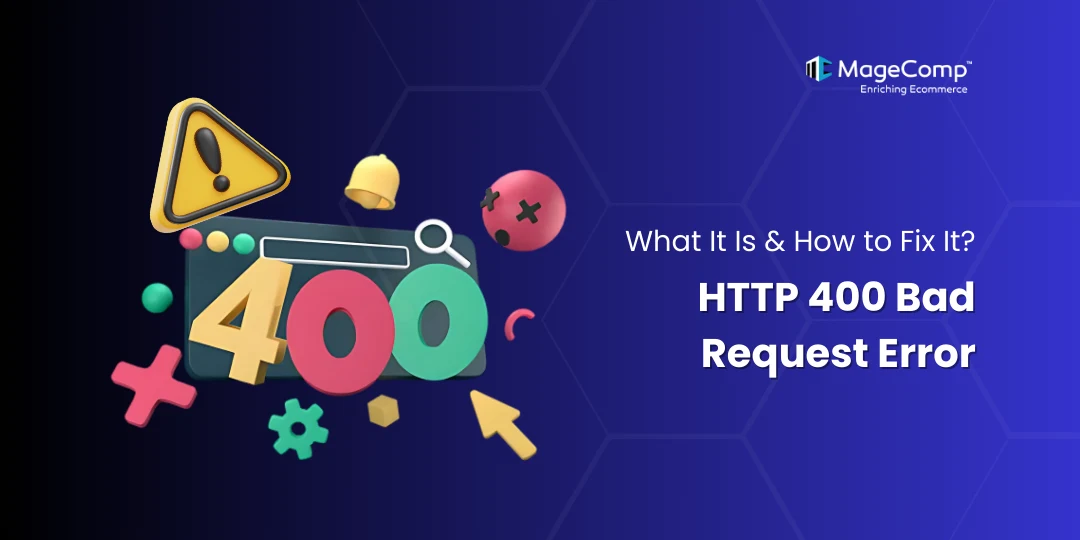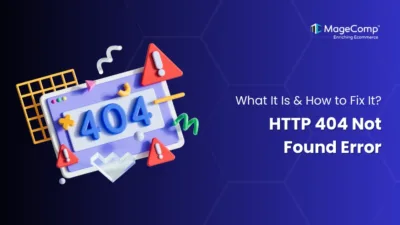You may have experienced the 400 Bad Request Error while on the internet. This type of error can be annoying when you are trying to quickly access a website, and the page doesn’t load with the expected content, but instead pulls up this error message. Understanding HTTP 400 Errors is important for both site owners and users to be able to recognize what might be going wrong so that they can rectify it quickly.

In this blog, we’ll provide answers to the questions of what a 400 Bad Request Error is, what causes these errors, and how to fix them.
What is a 400 Bad Request Error?
The HTTP 400 Error is a client error status code, which means that the server was not able to process the request because of invalid syntax or a corrupt request. In simple terms, when you get a Bad Request Error, it means that the request you sent to the server was something the server could not understand.
A 400 Bad Request Error is a member of the HTTP 4xx group of status codes, which are client issues such as invalid requests, unauthorized requests, or forbidden requests.
When you get a 400 Bad Request Error, you may see messages like:
- 400 Bad Request
- Bad Request – Invalid URL
- HTTP Error 400
- Request Header Too Large

Common Causes of HTTP 400 Errors
HTTP 400 Error Codes usually occur due to something going wrong with the request sent from your internet browser to the server. Some typical causes include:
Incorrect URL
This occurs when the URL is mistyped or contains invalid characters in the address bar.
Corrupted Browser Cache & Cookies
Corrupted cookies or insufficient cookies are the root cause of your requests generating errors.
Request Header Too Large
Cookies or headers may exceed the limit of the server.
Invalid File Upload
You may be attempting to upload files that are either too large or the extension or format is not supported.
DNS Lookup Issues
Your computer may not be able to resolve the IP address because the cached DNS data has expired, and it’s blocking the connection.
Server-Side Misconfiguration
Sometimes the 400 Bad Request error is the fault of the website’s server. This usually happens in hosted environments, but it can also happen if you are self-hosting.

How to Fix a 400 Bad Request Error?
If you got a 400 Bad Request, below are some troubleshooting suggestions you can implement:
Check the URL
Ensure that the URL you typed is correct and does not have any strange characters in the address bar.
Clear Browser Cache & Cookies
Clearing browser data is an excellent method to eliminate corrupted files that can be creating the error.
Refresh the DNS Cache
In Windows, open Command Prompt and type in:
ipconfig /flushdnsThis will clear out old DNS data.
Shrink File Size to Upload
During file uploads, make sure to check the file size. Any file that is too large must be resized and/or reformatted.
Try a Different Browser
There may be a problem with the browser you are using, so trying another browser can help identify whether it is a restriction with the requests.
Disable Browser Add-ons
Add-ons (also referred to as plugins) can corrupt requests if they are buggy. Try disabling them temporarily.
Contact the Website Administrator
If you are still having issues after employing the above troubleshooting methods, then the problem may be with the server. Get in touch with the support team of the site to help you further.

How Can Website Owners Stop 400 Errors?
If you are a website owner or manager and you are constantly getting an HTTP 400 error, this can affect both user experience and search engine optimization. That is why following best practices can greatly reduce the number of 400 Errors that you receive. Some recommendations include:
- Validate responses to all incoming requests to ensure the correct format.
- Use URL rewriting to fix improperly formed URLs.
- Set proper limits for cookies and headers.
- Make sure you regularly check the server logs for repetitive 400 errors.
- Also, use updates and security patches to keep your site stable.
If your Magento store is experiencing repetitive 400 Bad Request Errors, you can count on MageComp’s Magento Services.
Final Thoughts
Although a 400 Bad Request Error looks technical, it might be fairly simple to resolve once you realize the cause. The most basic causes are typing mistakes when entering a website’s URL, faulty cookies, or DNS issues. For all businesses, request validation and server-side configuration being properly set up is critically important in the diminishment of these errors.
The next time you experience a 400 Error, you’ll be well equipped to handle it!
FAQ
- What does a 400 Bad Request Error mean?
A 400 Bad Request Error means the server could not understand your request or process it because the request is malformed due to, for example, incorrect syntax, a wrongly entered URL, corrupt cookies, or a request header size too large.
- Is a 400 Error a client-side or server-side issue?
A 400 error is mainly a client-side problem. However, in rare cases, it can also occur due to server misconfigurations.
- How do I fix a 400 Bad Request Error as a user?
You can fix a 400 Bad Request error by:
- Checking and correcting the URL
- Clearing browser cache and cookies
- Flushing the DNS cache
- Reducing the size of any uploaded files
- Trying a different browser
- Can browser extensions cause 400 Errors?
Yes. Broken browser extensions or out-of-date extensions can cause problems with requests, leading to HTTP 400 Errors. Disabling all browser extensions temporarily for each browser may be useful to identify and fix your 400 Error.





